Rubbish Clearance Temple: A Comprehensive Overview
Introduction to Rubbish Clearance Temple
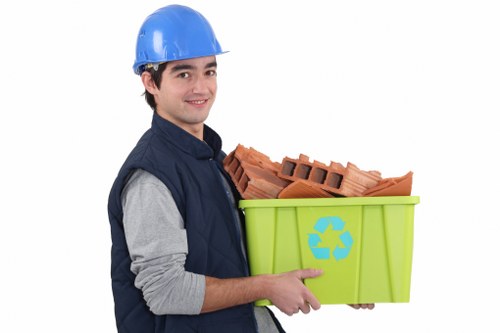
Rubbish Clearance Temple is a unique term that conjures images of historical heritage, community pride, and deep cultural respect balanced with modern environmental practices. In many urban and rural areas, the concept of keeping temple grounds clean is embraced as a sacred duty. This article explores the importance of efficient rubbish clearance and waste management around temples, merging traditional values with contemporary waste reduction strategies. Maintaining clean and sacred spaces is essential not only for the spiritual well-being of the community but also for the promotion of sustainable living.
The fusion of cultural heritage with practical waste disposal methods has given rise to what many call the Rubbish Clearance Temple phenomenon. It is not merely about discarding garbage; it is about preserving spiritual sanctity and environmental integrity. Communities often collaborate actively to ensure that their temple environments are free from clutter and debris, a commitment that involves both reverence and modern technical solutions. The integration of traditional practices with cutting-edge rubbish clearance techniques is setting a new standard for cleanliness and respect in public spaces.
Across many regions, the importance of clear, clean, and uncluttered temple surroundings has taken centre stage in public debates. People are increasingly aware that rubbish clearance is more than a chore; it is an act of respect to the sacred sites that have nurtured cultural and spiritual growth for centuries. Through the establishment of dedicated rubbish clearance initiatives, many temples have become exemplars of community effort and environmental stewardship. This balance of historical tradition and modern environmental care is what makes the topic both fascinating and deeply relevant.
The Significance of Temple Environment and Rubbish Clearance
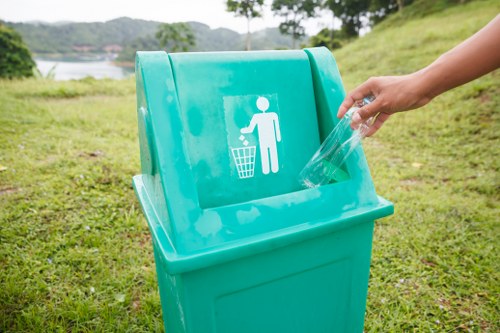
The temple environment holds a special place in community life. Rubbish clearance around these revered sites is not just a matter of aesthetics; it is a reflection of shared values and respect for the divine. Maintaining cleanliness around temple premises can also help mitigate risks like pest infestations and environmental degradation. Local volunteers and professional teams work hand in hand, ensuring that all rubbish, whether domestic waste or industrial debris, is promptly removed. Efficient rubbish clearance supports both public health and the preservation of cultural integrity.
Many communities believe that a clean space invites positive energy and good fortune. Thus, keeping temple areas spotless has been traditionally seen as attracting blessings and harmonious energy. This sacred duty often extends to regular cleaning schedules, community cleanup drives, and awareness programs on proper waste disposal. In modern times, these efforts have evolved to include advanced rubbish clearance techniques that combine traditional practices with innovative technology, ensuring that the temple environment remains both pristine and spiritually uplifting. The collaboration between local authorities and community groups has significantly enhanced the overall standards of waste management.
Moreover, the practice of in-house waste collection and segregation around temple areas is becoming more structured. Such initiatives often involve planning and organizing separate recycling units that are dedicated to different types of waste, whether it be organic, recyclable, or hazardous. These measures not only protect the environment but also promote community participation. The sense of ownership and responsibility is instilled in every member of the community through active involvement in rubbish clearance, thereby fostering a more mindful and united approach to environmental conservation.
Effective Rubbish Clearance Strategies in Temple Areas
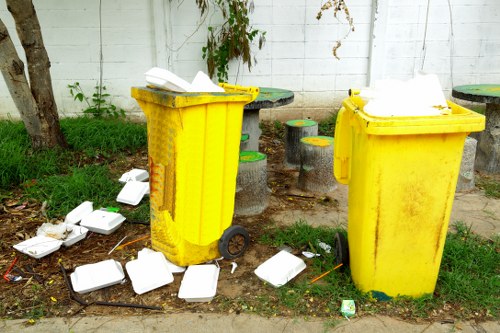
Implementing effective rubbish clearance strategies around temple environments is a task that involves both local government agencies and community groups. Innovative waste removal techniques such as the use of eco-friendly equipment and advanced segregation methods have transformed the way temples maintain cleanliness. These strategies are designed to manage everything from everyday litter to sudden accumulations of waste following public events or festivals. The incorporation of modern machinery and recycling programs ensures that operations are swift, sustainable, and respectful of the site's cultural significance.
Many rubbish clearance initiatives in temple areas now include educational programs designed to raise awareness about proper waste disposal. Local schools and community centers often host workshops where experts demonstrate the benefits of recycling and the proper handling of hazardous waste. By engaging the community in these educational efforts, a culture of responsibility is nurtured. This not only benefits the temple but also helps the broader area by minimizing environmental harm and encouraging sustainable living practices among residents. The approach is both practical and deeply rooted in community values.
In addition, modern strategies often involve the establishment of a dedicated waste management team exclusively responsible for temple areas. These teams are trained to clear accumulated rubbish quickly and safely, reducing the likelihood of health hazards. They utilize modern tools and follow standardized safety protocols, ensuring that the process is both efficient and secure. By leveraging technology and community participation, these specialized teams are able to handle a large volume of waste while preserving the aesthetic and spiritual integrity of the temple environment.
Environmental Impact and Community Benefits
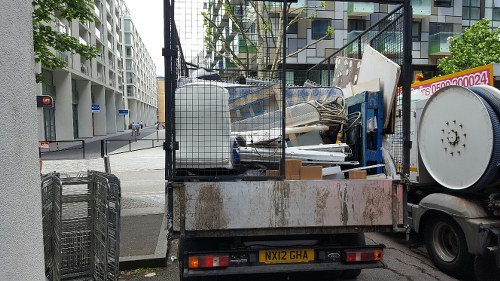
One cannot ignore the environmental impact of poorly managed waste in and around sacred spaces. Proper rubbish clearance ensures that harmful chemicals and waste do not infiltrate the soil or water sources near the temple. The prevention of soil and water contamination not only protects the natural habitat but also safeguards the health of local residents. Environmental benefits extend to improved air quality, reduced greenhouse gas emissions, and the conservation of biodiversity within temple precincts. Clear and clean environments are vital for maintaining a balanced ecosystem in urban settings.
Community benefits are further amplified when rubbish clearance is executed in a manner that is both systematic and sustainable. Clean temple areas enhance the overall image of the neighborhood, attracting more visitors and fostering community pride. Moreover, the collaborative effort required to maintain this cleanliness often leads to stronger social bonds within the community. Local residents not only feel a sense of duty but also a renewed sense of ownership over their cultural heritage. This _mutual respect_ between community members and local authorities is the cornerstone of any successful environmental initiative.
The environmental success of rubbish clearance strategies is often evidenced by the tangible improvements that follow. From reduced incidences of flooding due to blocked drainage systems to enhanced public health metrics, the benefits are manifold. The cost savings derived from preventing environmental degradation and ensuring efficient garbage collection are significant. Local governments are repeatedly praising community participation as it lessens the financial and labor burdens on public services. In this light, the drive for immaculate temple environments is both a cultural and environmentally sound decision.
Local Relevance: The Role of Rubbish Clearance in Temple Regions
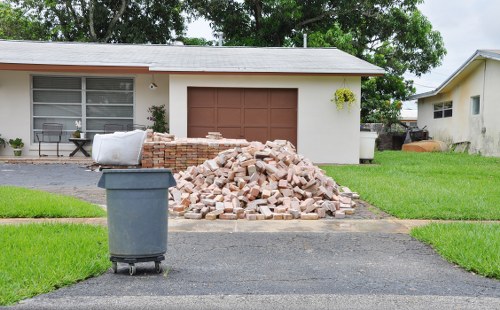
A significant aspect of the Rubbish Clearance Temple movement is its local relevance. Many temples, with their unique histories and architectural styles, serve as cultural magnets that draw visitors from all walks of life. However, these same spaces can accumulate a large amount of waste, particularly during peak visitation periods or religious festivals. Rubbish clearance in these areas is not just about removing waste, but also about preserving the integrity of cultural landmarks that have stood for centuries. Organizations dedicated to this cause often tailor their strategies to address local challenges and cultural nuances.
In temple regions, there is a growing emphasis on creating eco-friendly waste management systems that complement traditional practices. For instance, the reuse of organic waste as compost or fuel is increasingly popular in many temple grounds. This approach reduces the operational costs of waste disposal and minimizes environmental impact. Moreover, such practices encourage a holistic view of waste management, where nothing is wasted, and every by-product is repurposed for the greater good of the community. The result is an environmentally sustainable model that can be replicated in similar settings worldwide.
Local authorities and community organizations are now investing in infrastructure that supports efficient rubbish clearance. This includes dedicated bins for different types of waste, improved recycling facilities, and regular cleanliness drives. The mutual cooperation between temple administrators and waste management professionals is paving the way for a cleaner, greener future. With clear benefits that span ecological improvement and enhanced cultural integrity, the role of rubbish clearance in temple areas cannot be underestimated. Every effort made in this direction reinforces the commitment to protect both heritage and nature for future generations.
Nearby Areas Surrounding Temple
The influence of an effective rubbish clearance program extends beyond the temple boundaries and positively impacts several nearby areas. Regions that are in close proximity to temple sites are often the first to benefit from improved waste management practices. For example, Central Temple is known for its well-organized public spaces and efficient local governance that prioritizes environmental integrity. This area, often bustling with visitors and local residents, sees daily waste removal that keeps streets and public squares spotless.
To the north of the main temple premises lies North Temple, characterized by its blend of historical architecture and modern waste management systems. Here, community initiatives have been particularly instrumental, as local volunteers play a key role in maintaining the cleanliness of parks and adjoining streets. The success in North Temple serves as a model for other regions, emphasizing that community-driven efforts can effectively augment municipal services and ensure that cultural landmarks remain pristine.
Similarly, the East Temple area is recognized for its natural beauty, with landscapes that attract both tourists and locals. Waste management here focuses on preserving the scenic beauty of the region, coupled with techniques that emphasize recycling and the minimization of non-biodegradable materials. South Temple and West Temple also contribute uniquely to this broad initiative, each with their own emphasis on sustainability, cultural vibrancy, and technological innovation in rubbish clearance. Other notable regions include Temple Gardens, Temple View, Temple Ridge, Temple Heights, Temple Cross, Temple Meadows, and the historic Old Temple, each offering distinct characteristics that highlight the synergy between heritage preservation and modern environmental care.
Expected Experience and Conclusion
When engaging with the services of a professional rubbish clearance team in temple areas, residents and visitors can expect a thorough and respectful service. Professional teams use a variety of _advanced techniques_ and eco-friendly tools designed to address diverse types of waste, ensuring that every corner of the temple compound is treated with care. Interaction with these services is often described as seamless and highly professional, catering to the needs of both small-scale cleaning drives and large festival cleanups with equal proficiency. Combining the discipline of modern technology with the nuances of cultural sensitivity, these initiatives set the stage for a more sustainable future.
Community experience is a key element in the success of rubbish clearance programs. The cooperation between professional clearance teams and local volunteers creates an environment where every member feels responsible for maintaining their sacred spaces. This mutual effort not only enhances the aesthetic appeal but also reinforces the cultural and spiritual significance of the temple. Programs that focus on _public education_ and hands-on community involvement have shown remarkable results, leading to consistently improved waste management and increased community pride. The overall experience thus becomes both an act of service and an educational journey for all involved.
In conclusion, the concept of Rubbish Clearance Temple is a testament to how traditional values can be successfully integrated with modern environmental practices. The strategies discussed – from community-based initiatives and educational programs to advanced technological solutions – offer a blueprint that other cultural and historical sites might follow. Ultimately, these efforts lead to a cleaner, healthier, and more respectful environment that honors both the past and the future. As communities continue to innovate and invest in sustainable waste removal, the legacy of the temple as a beacon of cultural reverence and environmental stewardship will grow even stronger.
FAQs about Rubbish Clearance Temple
- What is the main goal of Rubbish Clearance Temple initiatives?
These initiatives aim to preserve the cultural and religious significance of temple areas by ensuring that the environment remains clean, safe, and eco-friendly through systematic waste management and community involvement. - How do modern rubbish clearance strategies integrate with traditional temple practices?
Modern strategies use eco-friendly technologies and workshop programs to complement traditional cleaning methods, ensuring both practicality and respect for cultural heritage. - What benefits can communities expect from effective temple waste management?
Communities enjoy improved public health, enhanced aesthetic appeal, cost savings on environmental management, and the reinforcement of cultural pride and unity. - Are there educational programs supporting these efforts?
Yes, many local authorities and community centers host workshops and educational sessions to raise awareness about proper waste segregation and sustainable practices in temple areas. - Which nearby areas benefit from these clearance programs?
Local areas such as Central Temple, North Temple, East Temple, South Temple, West Temple, Temple Gardens, Temple View, Temple Ridge, Temple Heights, Temple Cross, Temple Meadows, and Old Temple benefit greatly from these initiatives.